I fancy trying the Multi Rig. What do I need to know?
The multi rig is favoured by a number a well known ‘big fish’ anglers both in the UK and by anglers fishing European carp lakes. Oz Holness the former British carp record holder with Two Tone which he caught at a massive 67lbs 8oz in 2008 and also captor of The Burghfield Common stated in his Carpology interview that he uses the Multi Rig for 70 to 80% of his fishing.
So, let’s start with tying a Multi Rig up. It’s a nice and simple one to construct with a bonus by way of the facility to change the hook.
You’ll only need a few components too. Your hook wants to be a stiff rig/chod rig type with a large out-turned eye. A size 6 or 4 is a good one to start with being about right for a 15mm pop-up. You need a packet of large rig rings (use bait screws if you prefer not to tie your baits on), some standard size 8 swivels or ring swivels, if you’re using it on a helicopter set up, either split shot or tungsten putty to balance the buoyancy. Oh and of course there’s your hook link material which will be a coated braid.
Follow our step by step instructions to tie the Multi Rig
Step 1: Select your braided material
There is some licence for you to choose a braid that suits the lake bed you are fishing over. If the ground is really clean a stiffer one can be utilised to make things trickier for a carp to eject the rig. Should the spot onto which you are casting have some sparse weed growth or is likely to be covered in detritus, such as twigs if you are fishing in the margins, then a more supple, softer coated braid will have a better chance of sitting flush. Whichever coated braid you opt for it’s necessary to check that it doesn’t slide on the cast. 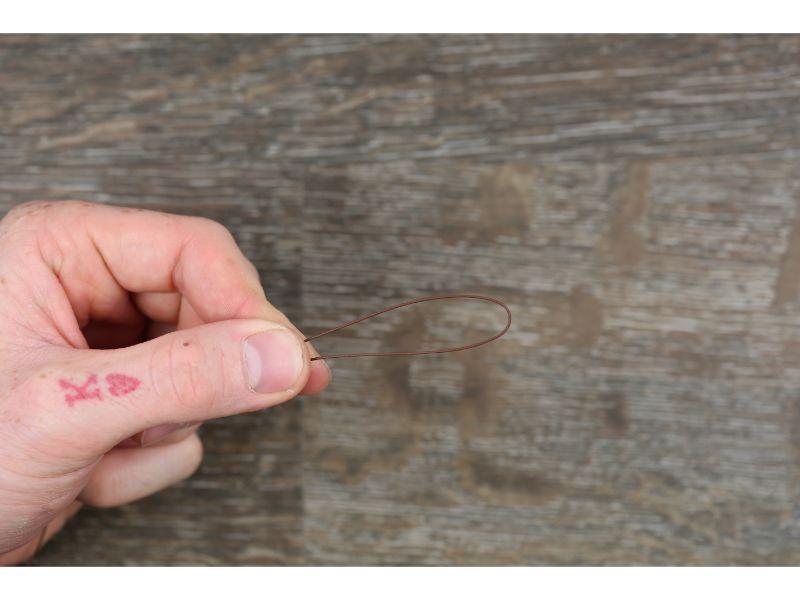
Step 2: Attach the hook using a figure of 8 loop
You see, the hook is attached to the hook length via a simple figure of 8 loop. This is tied onto one end of your material and can be altered in size to govern how high the pop-up sits. If you desire a low lying pop-up tie a small loop, a millimetre or two longer than the length of your hook and tie a longer one for something more blatant.
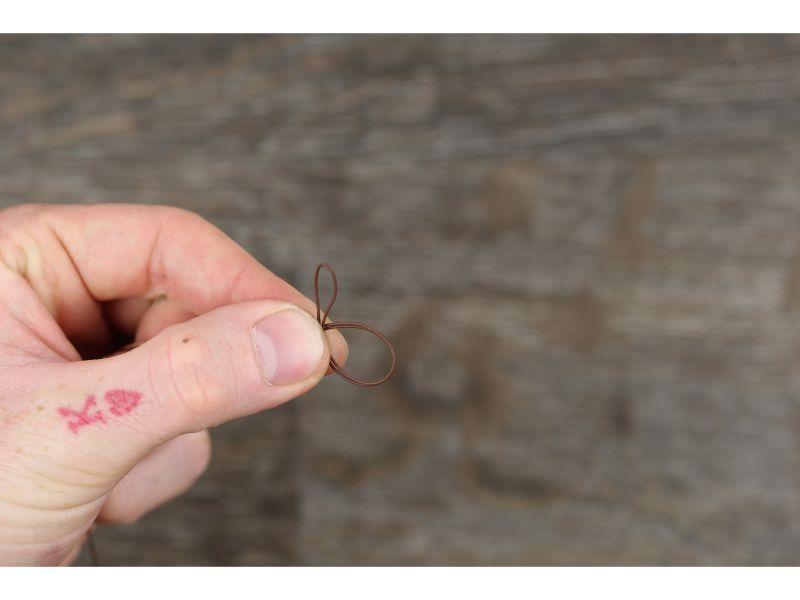
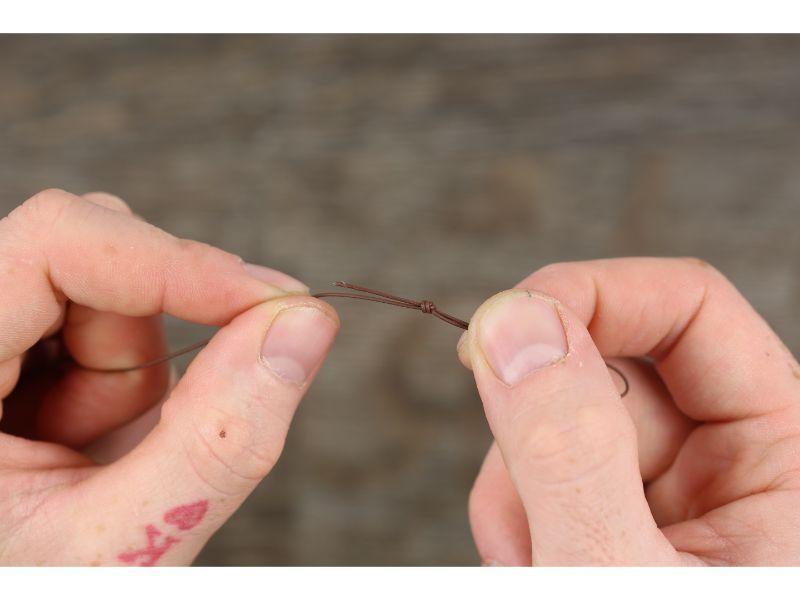
Step 3: Select a size 4 chod type hook with a large out-turned eye

Step 4: Thread the loop through the front of the hook eye
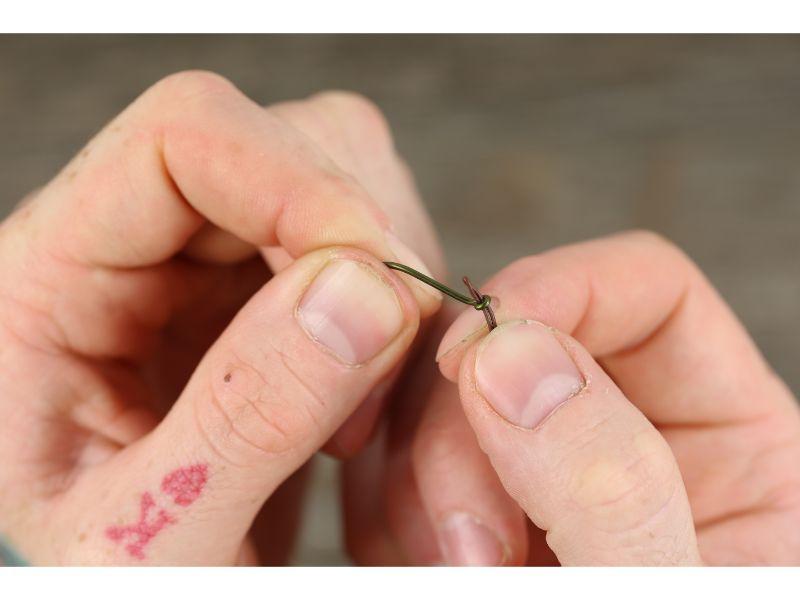
Step 5: Pop on the rig ring or bait screw and pass the loop over the bend of the hook, past the point
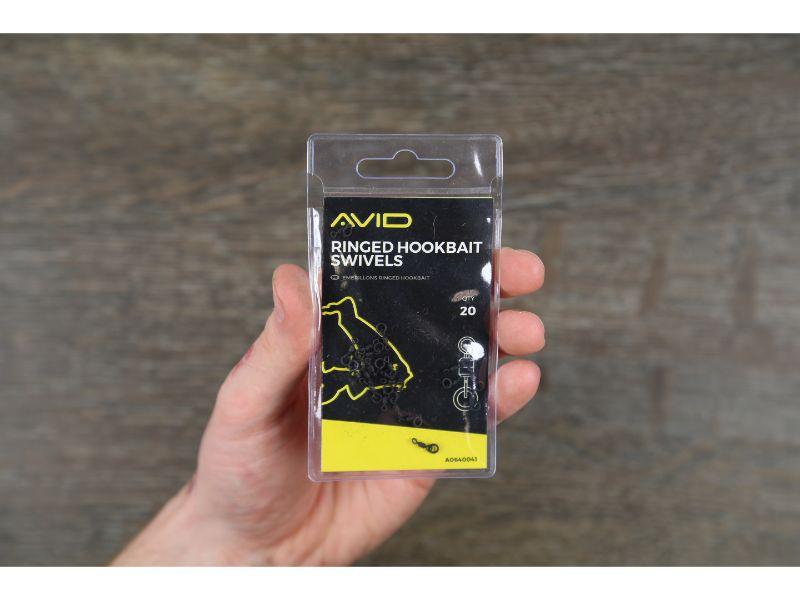
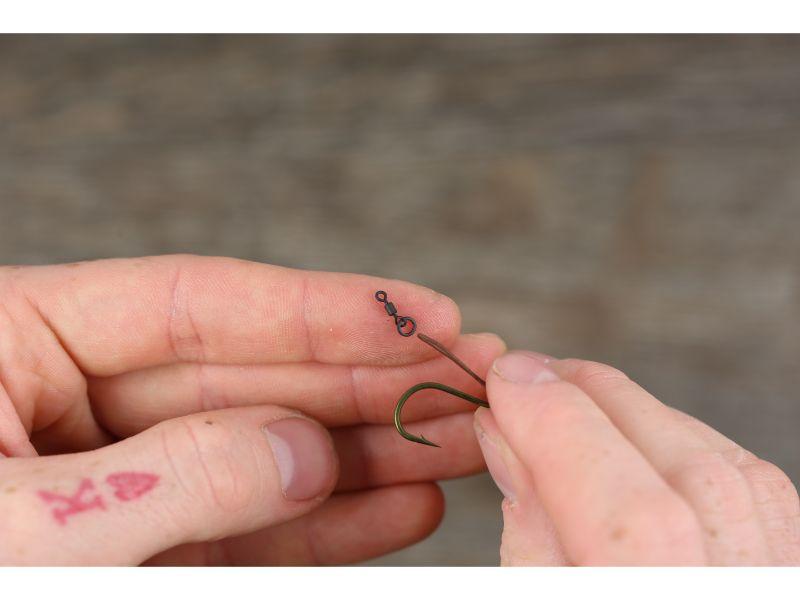
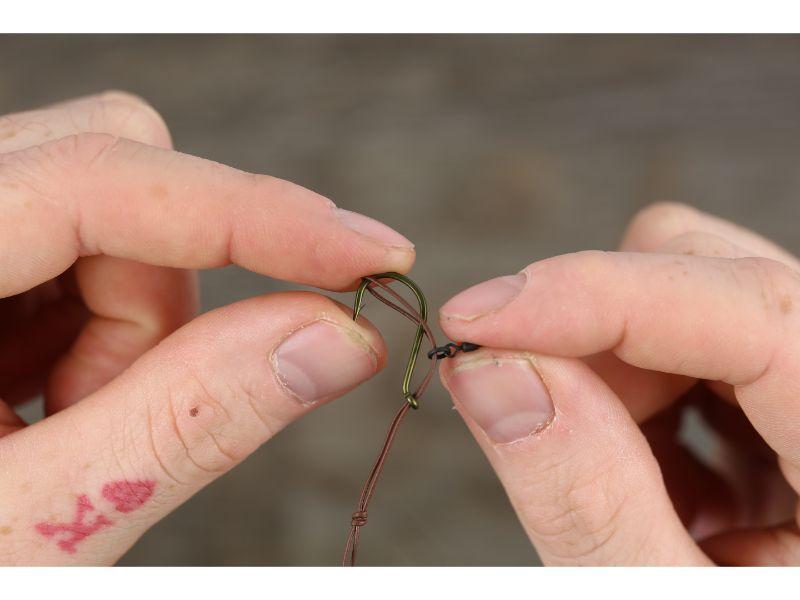
Step 6: Position the end of the loop opposite the barb and pull the material through the eye to form a large “D” running down the shank with the ring/bait screw sliding along it.
The thickness and rigidity of the braid along with the diameter and angle of the hook’s eye will affect how well the hook stays in this position. If you find it slips on the cast simply use a few mm of silicone over the eye to hold it more securely.
The fact that the loop can slip is one of the great features of the rig as it will pull down as soon as a fish is pricked. Not only does this keep the hook bait out of the way, up by the eye for the duration of the fight, it can be used to tell you if fish are getting away with it. Should you reel in with it all pulled down tight you’ll know you’ve been done.
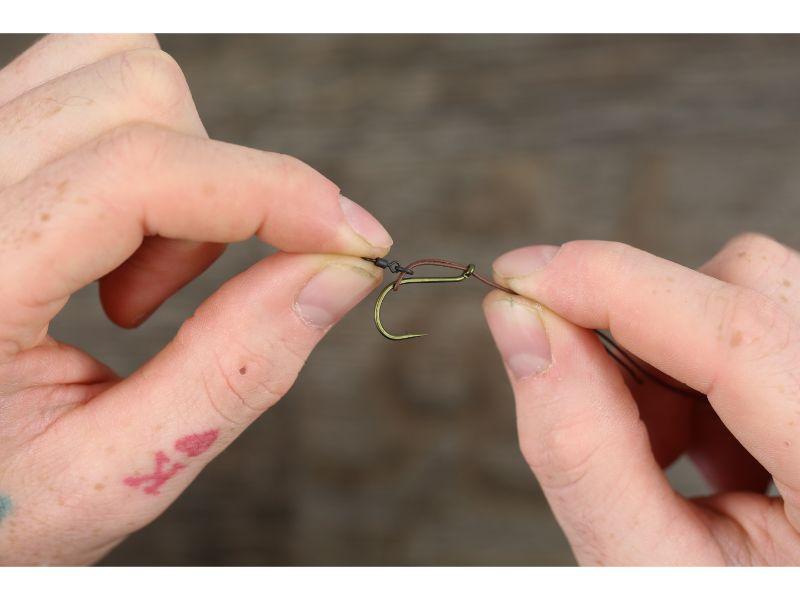
Step 7: Just beneath the knot you’ll need to peel back around 10mm of coating to provide flexibility and movement to the rig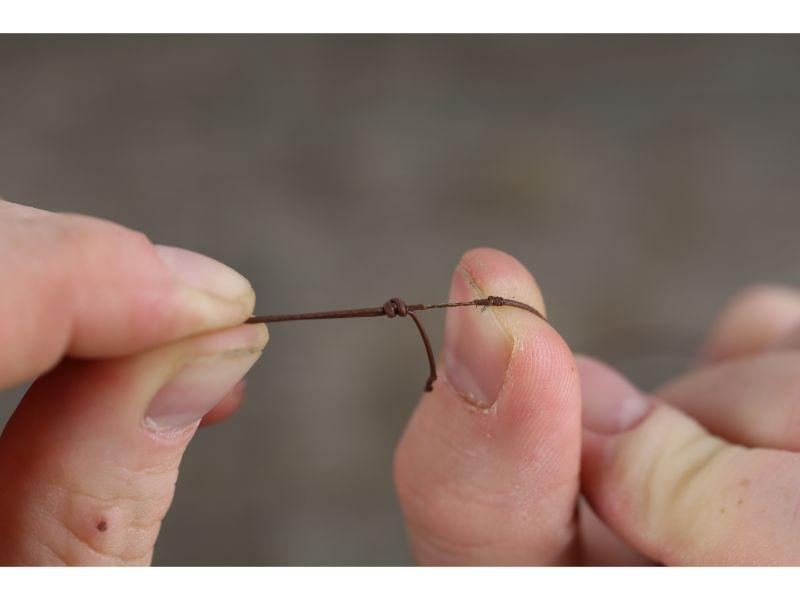
Step 8: You can use either a split shot on the supple bit or, as some prefer, mould a blob of putty around the fig. 8 knot which acts as the perfect anchor point.
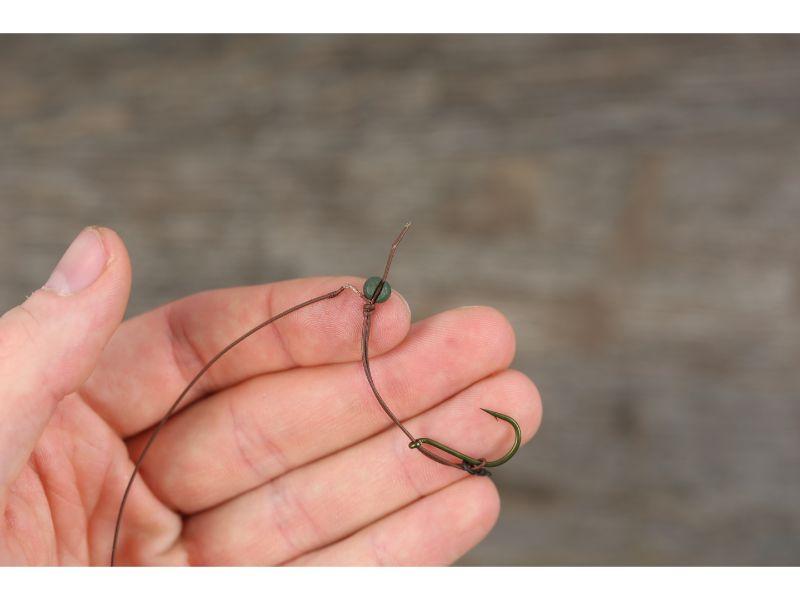
Step 9: Trim off the tage end from the split shot
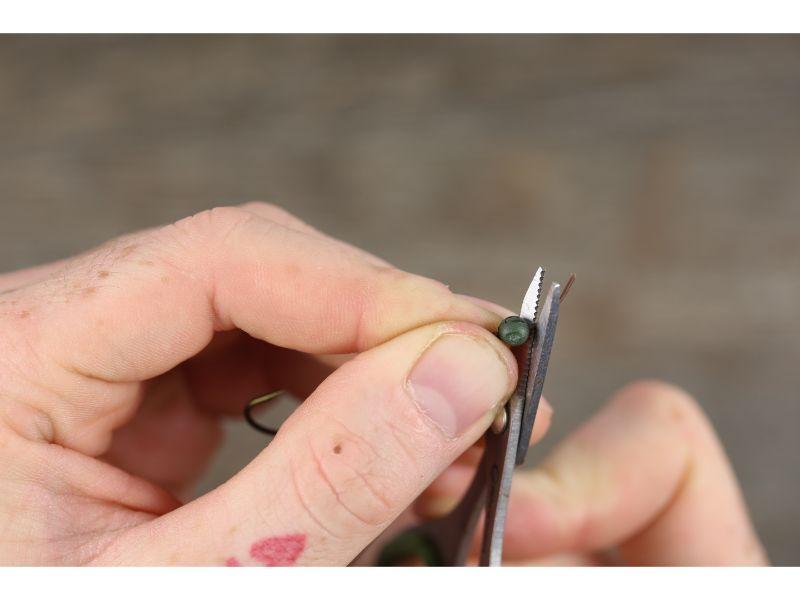
Step 9: To pin the rig down attach one or 2 rig sinkers


Step 10: Tie the other end of your hook length to your swivel
We like another loop which can be “loop to looped” onto the swivel but you can use a grinner if you prefer. You might want to add an anti tangle sleeve at this stage if desired. You’re aiming for an overall length of around about 8 inches give or take.
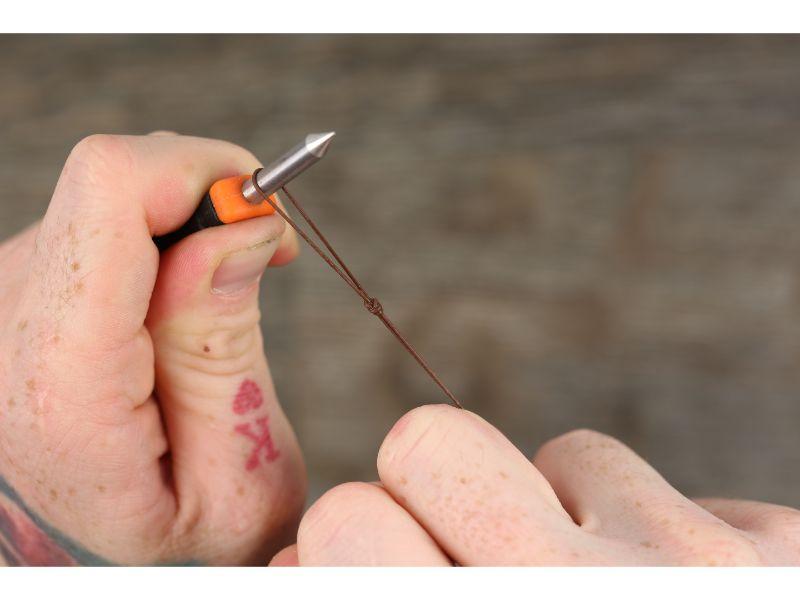
Step 10: Using some baiting floss attach a 15mm pop-up boilie to the ring swivel and use a lighter to secure it
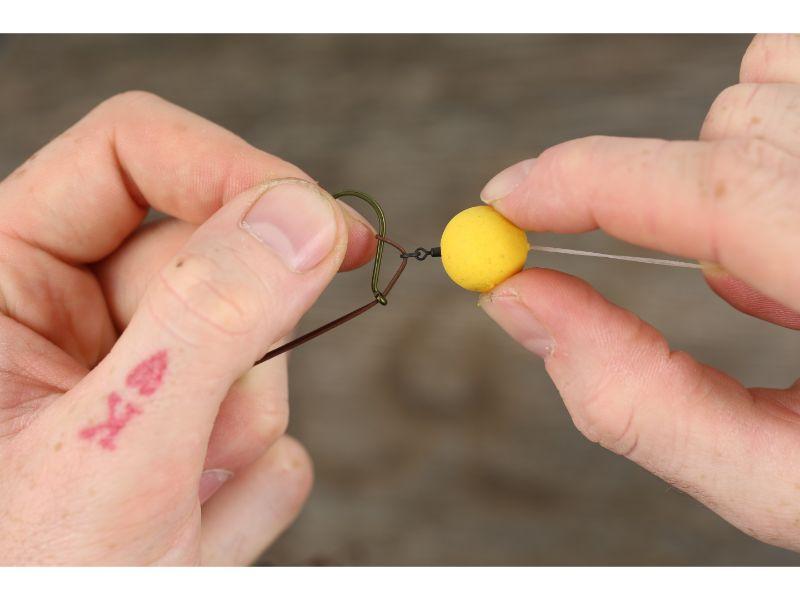

Step 11: Job done, you are ready to cast out! Read on to find ou what situations to use the multi rig in.
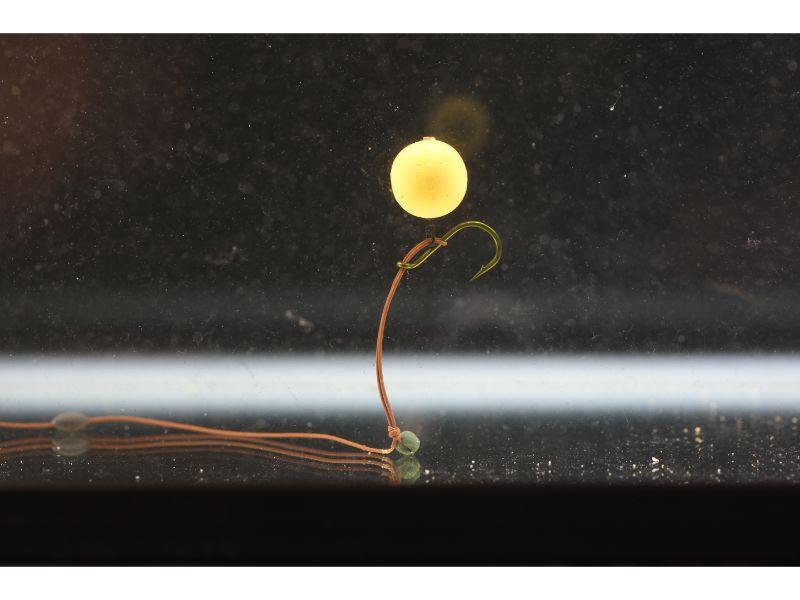
That sounds easy enough. When should I use the multi rig?
The Multi Rig is very versatile and can be used in a multitude of situations. Most pop-up rigs work best over a wide spread of boilie however, because the Multi Rig can be tied as to sit low, it is subtle enough to use over a more densely baited spot, making it ideal for clear holes in the weed. Clear water of even margins come into play when tied up this way too. It’s still great fished over a spread, where you can get away with tying it with a larger loop so it sits a bit higher.
Fishing with single hookbaits
One scenario where you’ll almost certainly want it a little higher is when using it to present a high attract single hookbait. In fact it’s one of the best rigs for this as its ability to sit well over a selection of different lake beds makes it ideal for casting at showing fish.
Use a softer coated braid when fishing over light weed
Gravel, sand, clay and silt are all well within its capabilities and it will also sit well in light weed when tied with a soft coated braid. Fishing for carp in weedier spots might require you to present it on a helicopter set up, on which the top bead can be slid up a few inches, allowing the lead to drop though the weed whilst the hook link settles gently on top with the hook sitting just proud of the greenery and unlikely to get caught up in it.
The Multi Rig is well suited to snag fishing
The Multi Rig has a reputation for being an excellent hooker. Its ability to produce a solid and reliable bottom lip purchase makes it a prime candidate when fishing in snags, heavy weed and when big fish are on the cards when that hook hold will be put to the test.
It can be fished with pop-ups or bottom baits
The way the rig sits and its mechanics are very much like the old bent hook rig and it will turn and spin in similar fashion. This attribute means that, although primarily a pop-up rig, it will also work very effectively with bottom baits. If you’re using Multi Rigs and feel it’s time for a change to a bottom bait there’s no need to swap rigs. Just reel in remove the counterbalance and stick on a bottom bait.
It is ideal for big hit fishing as you can change the hook
Lastly it’s a fantastic option for big hit fishing. It’s a rare day when conditions are good, the fish are feeding and you’re on them so you’ll want to make the most of it. Tying up rigs is the last thing you want to be doing so the ability to pop on a fresh hook without having to do so is reason enough to get on the Multi Rig.